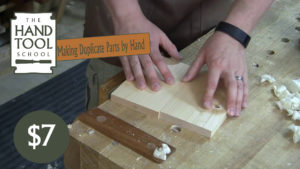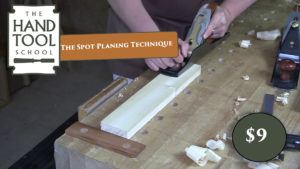A Better Way to Flatten a Board by Hand
Forget the Process and Treat Each Board as Unique
I’m hesitant to even call this a technique or a method because it is the total absence of process that makes this milling approach so effective. In short, every board is unique so doing the same thing to flatten every board is folly.
Here is the Secret
Diagnose the high spots and remove only the high spots…then and only then do you start taking full length passes. There is no need to work across the grain or diagonally, only with the grain.To add on to this, you want to spend more time checking the board with a straightedge than you do actually planing. Assume that every stroke you take with the plane is throwing it out of flat and so you need to check with the straightedge often so you aren’t creating a shape that will require even more planing to fix. The net result of all of this is a flat board with very little time spend planing and VERY little actual wood removed. So your 4/4 rough board is now 15/16 thick or you are making rip cuts right on the line and flattening and squaring the edge while removing only 1/32″ of wood.
This changes the game and makes milling a board by hand not a trial or hard work, but a quick and simple task that teaches you a lot about how that board will behave in all the subsequent steps.
New Lessons From The Hand Tool School Vault
- If you have ever wondered or struggled with creating parallel edges or duplicate sized parts by hand then this 20 minute lesson may be just the trick to get you making your parts identical with a hand plane.
- For a more in depth look of the Spot Planing Technique and instruction on how to build the planing stop I used in this live broadcast, check out my lesson on the same topic.




